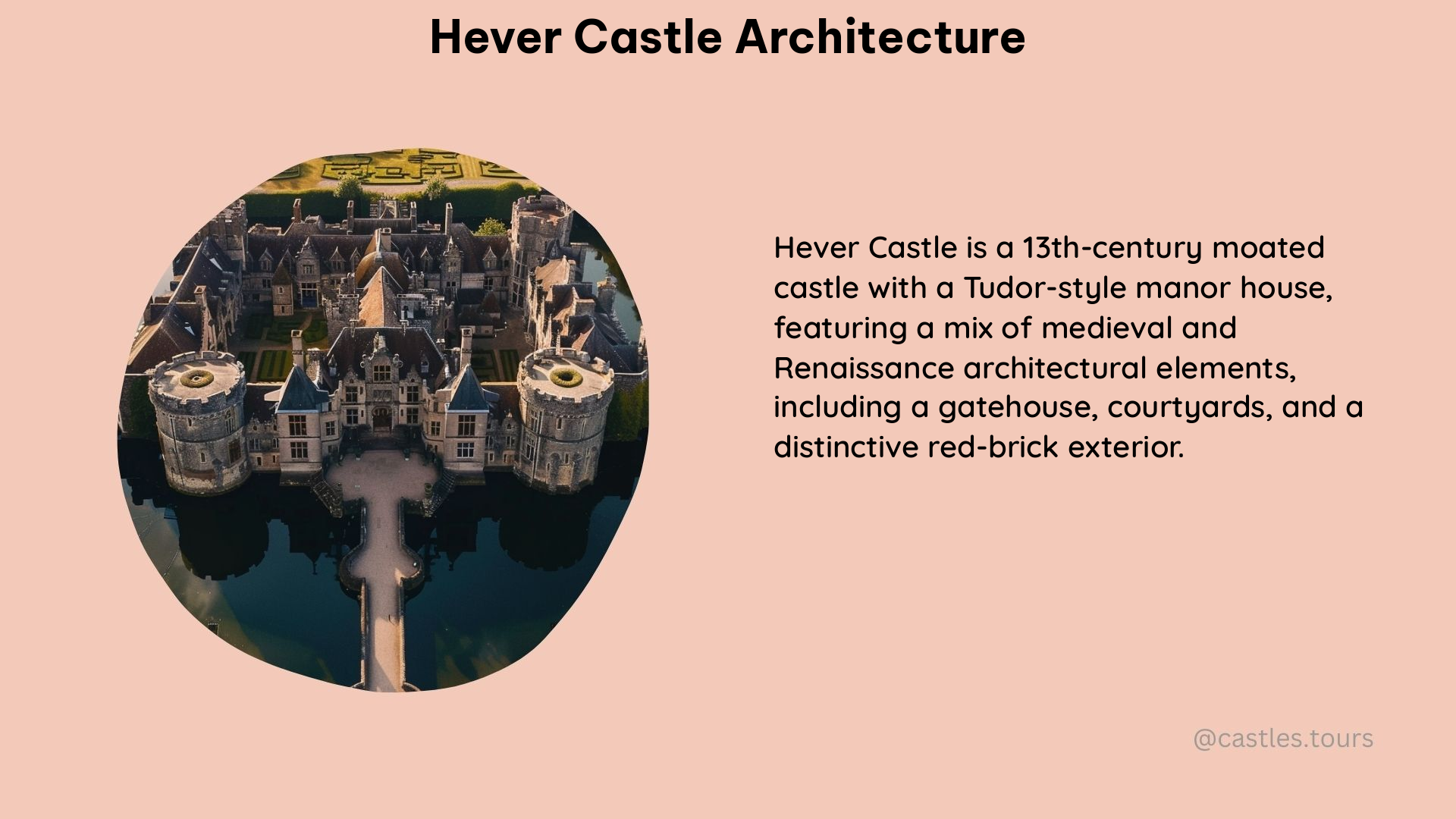Hever Castle, located in Kent, England, is a historic castle that boasts a rich architectural history spanning over 700 years. From its 13th-century origins to the 20th-century restoration efforts, the castle’s architecture reflects a captivating blend of medieval, Tudor, and Victorian styles, with elements of Ancient Greek and Roman influences.
The Evolution of Hever Castle
13th Century: The Beginnings
The castle’s oldest part, including the gatehouse and walled bailey, was built in 1270 by James Fiennes, 1st Baron Saye and Sele. This original 13th-century construction laid the foundation for the castle’s impressive architectural legacy.
15th Century: The Tudor Transformation
In 1462, Geoffrey Boleyn, the great-grandfather of Anne Boleyn, converted the castle into a manor, adding a Tudor dwelling within the existing walls. This Tudor-style addition to the castle’s architecture marked a significant shift in its design.
20th Century: The Astor Restoration
In 1903, William Waldorf Astor acquired the castle and undertook a major restoration project. During this time, the Tudor village (Astor Wing) and the Italian Garden were added, further enhancing the castle’s architectural diversity.
Architectural Highlights

The Gatehouse
The gatehouse is the only original part of the castle and boasts the oldest working original portcullis in England, a testament to its medieval craftsmanship.
The Walled Bailey
The walled bailey, also part of the original 13th-century construction, serves as a testament to the castle’s defensive architecture.
The Tudor Village (Astor Wing)
The Tudor village, or Astor Wing, was added by William Waldorf Astor in the early 20th century. This wing includes luxury accommodations and self-catering cottages, reflecting the Victorian-era’s influence on the castle’s architecture.
The Italian Garden
Designed to showcase Astor’s collection of Italian sculptures, the Italian Garden features a large lake, fountains, and ornate statuary, blending elements of Ancient Greek and Roman architecture with the castle’s overall aesthetic.
Mazes and Gardens
The castle grounds include a yew maze planted in 1904 and a water maze opened in 1999, adding a unique and whimsical element to the castle’s architecture. The gardens also feature a variety of areas, including rose gardens, herb gardens, and topiary, further enhancing the castle’s picturesque setting.
Restoration and Renovation
Frank Loughborough Pearson
The architect responsible for the 1903-1908 restoration project, Frank Loughborough Pearson, played a crucial role in shaping the castle’s architectural landscape. His work included the creation of the formal gardens and the Astor Wing.
Blending of Architectural Styles
Hever Castle’s architecture reflects a harmonious blend of medieval, Tudor, and Victorian styles, with elements of Ancient Greek and Roman architecture seamlessly incorporated throughout the castle and its grounds.
Current Status and Significance
Grade I Listed
Hever Castle has been Grade I listed since 1954, recognizing its historical significance and architectural importance.
Tourist Attraction
Today, Hever Castle is a popular tourist destination, offering visitors the opportunity to explore its rich architectural heritage, as well as its accommodations, dining, and various events and activities.
Hever Castle’s architectural journey is a captivating tale of resilience, adaptation, and the preservation of history. From its medieval origins to the 20th-century restoration, the castle’s architecture continues to captivate and inspire visitors from around the world.
